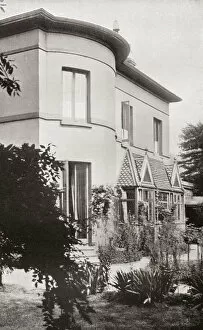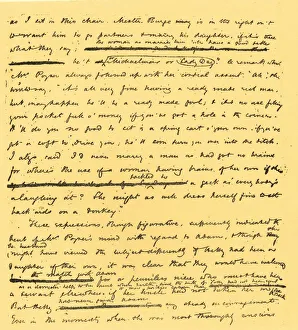Mary Ann Evans Collection (page 2)
Mary Ann Evans, better known by her pen name George Eliot, was a prominent figure in the world of Victorian literature
All Professionally Made to Order for Quick Shipping
Mary Ann Evans, better known by her pen name George Eliot, was a prominent figure in the world of Victorian literature. Her works captivated readers with their depth and emotional intensity, leaving an indelible mark on the literary landscape of the late 19th century. In one engraving titled "Tessa at Home, " we see a glimpse into George Eliot's novel Romola. The artist Frederic Leighton skillfully captures the essence of this powerful story, transporting us to a different time and place. Another engraving depicts a scene from Silas Marner, where we witness the protagonist's heart-wrenching journey. As he clasps his restored treasure tightly in his hands, his heart beats violently with overwhelming emotions. In yet another engraving from The Mill on the Floss, Maggie Tulliver finds solace among gypsies. This colorful lithograph portrays her seeking refuge amidst uncertainty and turmoil—a poignant moment that showcases Eliot's ability to delve into complex human experiences. The engravings offer glimpses into some of George Eliot's most beloved works—scenes filled with raw emotion and profound introspection. Through her writing, she explored themes that resonated deeply with readers during this era: love, loss, societal constraints, and personal growth. George Eliot herself is immortalized in an oil painting from 1880-81. The canvas captures her essence as a writer—an intellectual force who challenged conventions through her thought-provoking narratives. As we immerse ourselves in these engravings and paintings inspired by Mary Ann Evans' work as George Eliot, we are reminded of her enduring legacy as one of the greatest poets and novelists of Victorian literature. Her words continue to resonate across generations—inviting us to reflect on our own lives while exploring universal truths about humanity itself.












